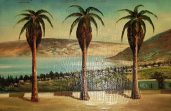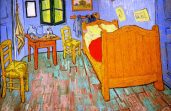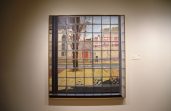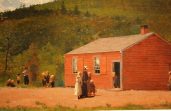Thirty Years Ago
The Berlin Wall Came Down
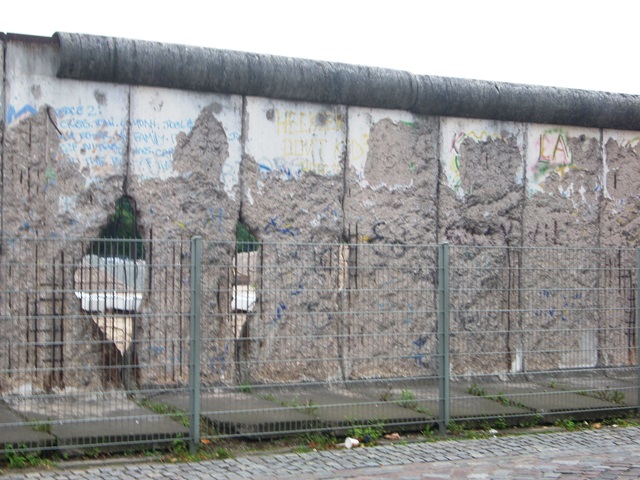
“Mr. Gorbachev, tear down this wall!”
~ President Ronald Reagan ~
June 12, 1987
History never happens in isolation; it was a moment that took on a life of its own, but it had not had a solitary birth.
I will never forget the day this wall, which represented all of the evil and heartache embodied by communism and the dreaded iron curtain, was finally brought down by the very people who had been so tormented by it.
Of my own fruition, I would never have gone to Germany, but Kate wanted to go; and I am glad we went. By the time I saw what was left of the wall, it had lost all of its power; thank God.
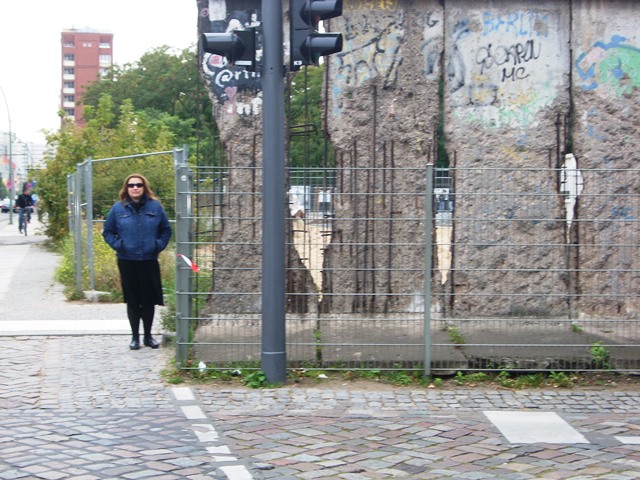
As with pieces of the Twin Towers, which have been sent around the world, to aid in our remembrance, there are pieces of the Berlin Wall housed around the world, as well. Also, many artists have used the wall to aid in their freedom of expression, the perfect antithesis to why it was created.
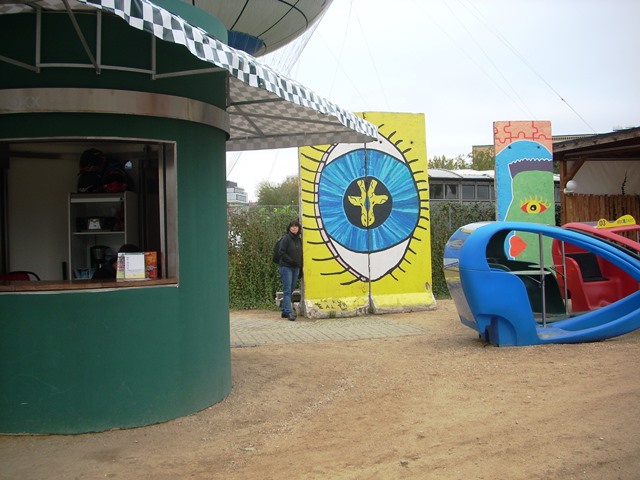
Today is an anniversary worth marking by us all.
From Wikipedia:
“The fall of the Berlin Wall (German: Mauerfall), on 9 November 1989, was a pivotal event in world history which marked the falling of the Iron Curtain. The fall of the inner German border took place shortly afterwards. An end to the Cold War was declared at the Malta Summit three weeks later, and the reunification of Germany took place during the following year.
Following the April 1989 dismantling of an electric fence along the border between Hungary and Austria, by early November refugees were finding their way to Hungary via Czechoslovakia or via the West German Embassy in Prague. The emigration was initially tolerated because of long-standing agreements with the communist Czechoslovak government, allowing free travel across their common border. However this movement of people grew so large it caused difficulties for both countries. In addition, East Germany was struggling to meet loan payments on foreign borrowings; Egon Krenz sent Alexander Schalck-Golodkowski to unsuccessfully ask West Germany for a short-term loan to make interest payments.
On 18 October 1989, longtime SED leader Erich Honecker stepped down in favor of Krenz. Honecker had been seriously ill, and those looking to replace him were initially willing to wait for a “a biological solution”, but by October were convinced that the political and economic situation was too grave. Honecker approved the choice, naming Krenz in his resignation speech, and the Volkskammer duly elected him. Although Krenz promised reforms in his first public speech, he was considered by the East German public to be following his predecessor’s policies, and public protests demanding his resignation continued. Despite promises of reform, public opposition to the regime continued to grow.
On 1 November, Krenz had authorized the reopening of the border with Czechoslovakia, which had been sealed to prevent East Germans from fleeing to West Germany. On 4 November the Alexanderplatz demonstration took place.
On 6 November, the Interior Ministry published a draft of new travel regulations, which made cosmetic changes to Honecker-era rules, leaving the approval process opaque and maintaining uncertainty regarding access to foreign currency. The draft enraged ordinary citizens, and was denounced as “complete trash” by West Berlin Mayor Walter Momper. Hundreds of refugees crowded onto the steps of the West German embassy in Prague, enraging the Czechoslovaks, who threatened to seal off the East German-Czechoslovak border.
On 7 November, Krenz approved the resignation of Prime Minister Willi Stoph and two-thirds of the Politburo; however Krenz was unanimously re-elected as General Secretary by the Central Committee.
On 19 October, Krenz asked Gerhard Lauter to prepare a new travel policy.
At a Politburo meeting on 7 November, it was decided to enact a portion of the draft travel regulations addressing permanent emigration immediately. Initially, the Politburo planned to create a special border crossing near Schirnding specifically for this emigration. The Interior and Stasi bureaucrats charged with crafting the new text, however, concluded this was not feasible, and crafted a new text relating to both emigration and temporary travel. It stipulated that East German citizens could apply for permission to travel abroad without having to meet the previous requirements for those trips, and also allowed for permanent emigration between all border crossings—including those between East and West Berlin. To ease the difficulties, the politburo led by Krenz decided on 9 November to allow refugees to exit directly through crossing points between East Germany and West Germany, including between East and West Berlin. Later the same day, the ministerial administration modified the proposal to include private, round-trip, travel. The new regulations were to take effect the next day.
The press conference on 9 November 1989 by Günter Schabowski and other East German officials which led to the Fall of the Wall. Riccardo Ehrman is sitting on the floor of the stage with the table just behind him.
The announcement of the regulations which brought down the wall took place at an hour long press conference led by Günter Schabowski, the party boss in East Berlin and the spokesman for the SED Politburo, beginning at 18:00 CET and broadcast live on East German television and radio.
Schabowski had not been involved in the discussions about the new regulations and had not been fully updated. Shortly before the 9 November press conference, he was handed a note from Krenz announcing the changes, but given no further instructions on how to handle the information. The text stipulated that East German citizens could apply for permission to travel abroad without having to meet the previous requirements for those trips, and also allowed for permanent emigration between all border crossings—including those between East and West Berlin. These regulations, which had only been completed a few hours earlier, were to take effect the following day, so as to allow time to inform the border guards. But this starting time delay was not communicated to Schabowski.
At 18:53, near the end of the press conference, ANSA’s Riccardo Ehrman asked if the draft travel law of 6 November was a mistake. Schabowski gave a confused answer that asserted it was necessary because West Germany had exhausted its capacity to accept fleeing East Germans, then remembered the note he had been given and added that a new law had been drafted to allow permanent emigration at any border crossing. This caused a stir in the room; amid several questions at once, Schabowski expressed surprise that the reporters had not yet seen this law, and started reading from the note. After this, a reporter, either Ehrman or Bild-Zeitung reporter Peter Brinkmann, both of whom were sitting in the front row at the press conference, asked when the regulations would take effect. After a few seconds’ hesitation, Schabowski replied, “As far as I know, it takes effect immediately, without delay” (German: Das tritt nach meiner Kenntnis … ist das sofort … unverzüglich.) This was an apparent assumption based on the note’s opening paragraph – as Gerhard Beil attempted to interject that it was up to the Council of Ministers to decide when it took effect, Schabowski proceeded to read this clause, which stated it was in effect until a law on the matter was passed by the Volkskammer. Crucially, a journalist then asked if the regulation also applied to the crossings to West Berlin. Schabowski shrugged and read item 3 of the note, which confirmed that it did.
After this exchange, Daniel Johnson of The Daily Telegraph asked what this law meant for the Berlin Wall; Schabowski sat frozen before giving a rambling statement about the Wall being tied to the larger disarmament question. He then ended the press conference promptly at 19:00 as journalists hurried from the room.
After the press conference, Schabowski sat for an interview with NBC reporter Tom Brokaw in which he repeated that East Germans would be able to emigrate through the border and the regulations would go into effect immediately
The news began spreading immediately: the West German Deutsche Presse-Agentur issued a bulletin at 19:04 which reported that East German citizens would be able to cross the inner German border “immediately”. Excerpts from Schabowski’s press conference were broadcast on West Germany’s two main news programs that night—at 19:17 on ZDF’s heute, which came on the air as the press conference was ending, and as the lead story at 20:00 on ARD’s Tagesschau. As ARD and ZDF had broadcast to nearly all of East Germany since the late 1950s, were far more widely viewed than the East German channels, and had become accepted by the East German authorities, this is how most of the population heard the news. Later that night, on ARD’s Tagesthemen, anchorman Hanns Joachim Friedrichs proclaimed, “This 9 November is a historic day. The GDR has announced that, starting immediately, its borders are open to everyone. The gates in the Wall stand open wide.”
In 2009, Ehrman claimed that a member of the Central Committee had called him and urged him to ask about the travel law during the press conference, but Schabowski called that absurd. Ehrman later recanted this statement in a 2014 interview with an Austrian journalist, admitting that the caller was Günter Pötschke, head of the East German news agency ADN, and he only asked if Ehrman would attend the press conference.
After hearing the broadcast, East Germans began gathering at the Wall, at the six checkpoints between East and West Berlin, demanding that border guards immediately open the gates. The surprised and overwhelmed guards made many hectic telephone calls to their superiors about the problem. At first, they were ordered to find the “more aggressive” people gathered at the gates and stamp their passports with a special stamp that barred them from returning to East Germany—in effect, revoking their citizenship. However, this still left thousands of people demanding to be let through “as Schabowski said we can”. It soon became clear that no one among the East German authorities would take personal responsibility for issuing orders to use lethal force, so the vastly outnumbered soldiers had no way to hold back the huge crowd of East German citizens. Mary Elise Sarotte in a 2009 Washington Post story characterized the series of events leading to the fall of the wall as an accident, saying “One of the most momentous events of the past century was, in fact, an accident, a semicomical and bureaucratic mistake that owes as much to the Western media as to the tides of history.”
Finally, at 10:45 p.m. (alternatively given as 11:30 p.m.) on 9 November, Harald Jäger, the commander of the Bornholmer Straße border crossing yielded, allowing for the guards to open the checkpoints and allowing people through with little or no identity checking. As the Ossis swarmed through, they were greeted by Wessis waiting with flowers and champagne amid wild rejoicing. Soon afterward, a crowd of West Berliners jumped on top of the Wall and were soon joined by East German youngsters. The evening of 9 November 1989 is known as the night the Wall came down.
Another border crossing to the south may have been opened earlier. An account by Heinz Schäfer indicates that he also acted independently and ordered the opening of the gate at Waltersdorf-Rudow a couple of hours earlier. This may explain reports of East Berliners appearing in West Berlin earlier than the opening of the Bornholmer Straße border crossing.
The fall began the evening of 9 November 1989 and continued over the following days and weeks, with people nicknamed Mauerspechte (wall woodpeckers) using various tools to chip off souvenirs, demolishing lengthy parts in the process, and creating several unofficial border crossings.
Television coverage of citizens demolishing sections of the Wall on 9 November was soon followed by the East German regime announcing ten new border crossings, including the historically significant locations of Potsdamer Platz, Glienicker Brücke, and Bernauer Straße. Crowds gathered on both sides of the historic crossings waiting for hours to cheer the bulldozers that tore down portions of the Wall to reconnect the divided roads. While the Wall officially remained guarded at a decreasing intensity, new border crossings continued for some time. Initially the East German Border Troops attempted repairing damage done by the “Wall peckers”; gradually these attempts ceased, and guards became more lax, tolerating the increasing demolitions and “unauthorized” border crossing through the holes.
The Brandenburg Gate in the Berlin Wall was opened on 22 December 1989; on that date, West German Chancellor Helmut Kohl walked through the gate and was greeted by East German Prime Minister Hans Modrow. West Germans and West Berliners were allowed visa-free travel starting 23 December. Until then, they could only visit East Germany and East Berlin under restrictive conditions that involved application for a visa several days or weeks in advance and obligatory exchange of at least 25 DM per day of their planned stay, all of which hindered spontaneous visits. Thus, in the weeks between 9 November and 23 December, East Germans could actually travel more freely than Westerners.
On 13 June 1990, the East German Border Troops officially began dismantling the Wall. Beginning in Bernauer Straße and around the Mitte district. From there, demolition continued through Prenzlauer Berg/Gesundbrunnen, Heiligensee and throughout the city of Berlin until December 1990. According to estimates by the border troops, a total of around 1.7 million tonnes of building rubble was produced by the demolition.
Unofficially, the demolition of the Bornholmer Straße began because of construction work on the railway. This involved a total of 300 GDR border guards and—after 3 October 1990—600 Pioneers of the Bundeswehr. These were equipped with 175 trucks, 65 cranes, 55 excavators and 13 bulldozers. Virtually every road that was severed by the Berlin Wall, every road that once linked from West Berlin to East Berlin, was reconstructed and reopened by 1 August 1990. In Berlin alone, 184 km (114 mi) of wall, 154 km (96 mi) border fence, 144 km (89 mi) signal systems and 87 km (54 mi) barrier ditches were removed. What remained were six sections that were to be preserved as a memorial. Various military units dismantled the Berlin/Brandenburg border wall, completing the job in November 1991. Painted wall segments with artistically valuable motifs were put up for auction in 1990 in Berlin and Monte Carlo.
On 1 July 1990, the day East Germany adopted the West German currency, all de jure border controls ceased, although the inter-German border had become meaningless for some time before that. The demolition of the Wall was completed in 1992.
The fall of the Wall marked the first critical step towards German reunification, which formally concluded a mere 339 days later on 3 October 1990 with the dissolution of East Germany and the official reunification of the German state along the democratic lines of the West German Basic Law.”





